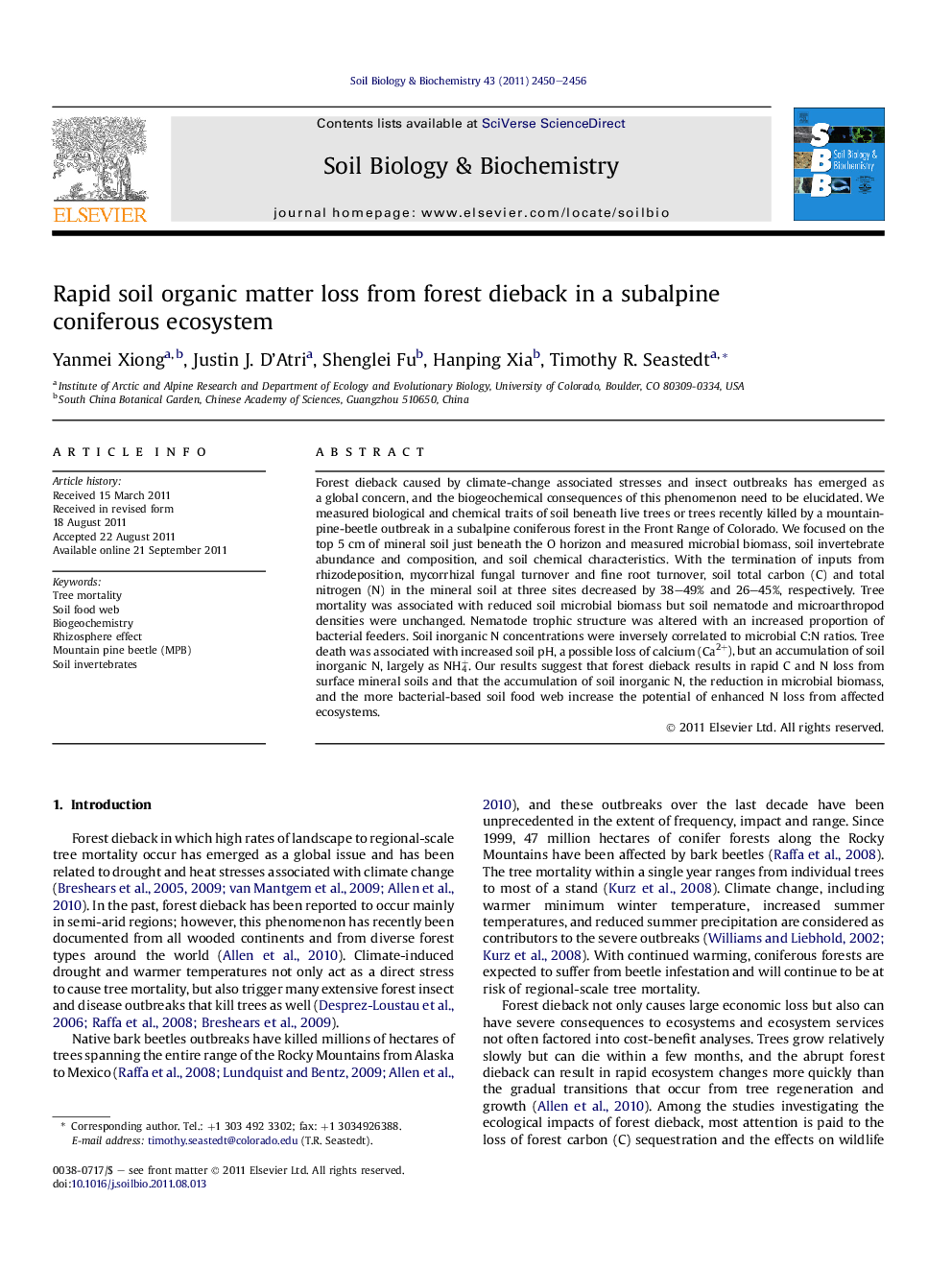| کد مقاله | کد نشریه | سال انتشار | مقاله انگلیسی | نسخه تمام متن |
|---|---|---|---|---|
| 2025169 | 1069984 | 2011 | 7 صفحه PDF | دانلود رایگان |

Forest dieback caused by climate-change associated stresses and insect outbreaks has emerged as a global concern, and the biogeochemical consequences of this phenomenon need to be elucidated. We measured biological and chemical traits of soil beneath live trees or trees recently killed by a mountain-pine-beetle outbreak in a subalpine coniferous forest in the Front Range of Colorado. We focused on the top 5 cm of mineral soil just beneath the O horizon and measured microbial biomass, soil invertebrate abundance and composition, and soil chemical characteristics. With the termination of inputs from rhizodeposition, mycorrhizal fungal turnover and fine root turnover, soil total carbon (C) and total nitrogen (N) in the mineral soil at three sites decreased by 38–49% and 26–45%, respectively. Tree mortality was associated with reduced soil microbial biomass but soil nematode and microarthropod densities were unchanged. Nematode trophic structure was altered with an increased proportion of bacterial feeders. Soil inorganic N concentrations were inversely correlated to microbial C:N ratios. Tree death was associated with increased soil pH, a possible loss of calcium (Ca2+), but an accumulation of soil inorganic N, largely as NH4+. Our results suggest that forest dieback results in rapid C and N loss from surface mineral soils and that the accumulation of soil inorganic N, the reduction in microbial biomass, and the more bacterial-based soil food web increase the potential of enhanced N loss from affected ecosystems.
► Biogeochemical changes in mineral soil occur in response to forest dieback caused by beetle kill.
► Carbon and nitrogen content, soil pH, and cation concentrations were affected.
► Microbial biomass declined, nematode trophic composition changed, but microarthropods were unchanged.
► Changes leave the system more vulnerable to nutrient losses.
Journal: Soil Biology and Biochemistry - Volume 43, Issue 12, December 2011, Pages 2450–2456